- News
- Reviews
- Bikes
- Components
- Bar tape & grips
- Bottom brackets
- Brake & gear cables
- Brake & STI levers
- Brake pads & spares
- Brakes
- Cassettes & freewheels
- Chains
- Chainsets & chainrings
- Derailleurs - front
- Derailleurs - rear
- Forks
- Gear levers & shifters
- Groupsets
- Handlebars & extensions
- Headsets
- Hubs
- Inner tubes
- Pedals
- Quick releases & skewers
- Saddles
- Seatposts
- Stems
- Wheels
- Tyres
- Tubeless valves
- Accessories
- Accessories - misc
- Computer mounts
- Bags
- Bar ends
- Bike bags & cases
- Bottle cages
- Bottles
- Cameras
- Car racks
- Child seats
- Computers
- Glasses
- GPS units
- Helmets
- Lights - front
- Lights - rear
- Lights - sets
- Locks
- Mirrors
- Mudguards
- Racks
- Pumps & CO2 inflators
- Puncture kits
- Reflectives
- Smart watches
- Stands and racks
- Trailers
- Clothing
- Health, fitness and nutrition
- Tools and workshop
- Miscellaneous
- Buyers Guides
- Features
- Forum
- Recommends
- Podcast
review
£7,500.00
VERDICT:
Super-fast aerodynamic machine - it could be the most aero bike out there; if not, it's certainly right up there - with excellent adjustability and a top spec sheet
Weight:
8,560g
Contact:
At road.cc every product is thoroughly tested for as long as it takes to get a proper insight into how well it works. Our reviewers are experienced cyclists that we trust to be objective. While we strive to ensure that opinions expressed are backed up by facts, reviews are by their nature an informed opinion, not a definitive verdict. We don't intentionally try to break anything (except locks) but we do try to look for weak points in any design. The overall score is not just an average of the other scores: it reflects both a product's function and value – with value determined by how a product compares with items of similar spec, quality, and price.
What the road.cc scores meanGood scores are more common than bad, because fortunately good products are more common than bad.
- Exceptional
- Excellent
- Very Good
- Good
- Quite good
- Average
- Not so good
- Poor
- Bad
- Appalling
Trek reckon their Speed Concept is the fastest production bike in the world. That's some claim. We've been riding the top of the range 9.9 model for the past few weeks to find out whether we agree. There's no disputing, this thing is quick...
Frame and forks
Everything about the Speed Concept 9 Series is designed with aerodynamics in mind and that starts with the shaping of the carbon tubes. Trek use a tube profile called the Kammtail Virtual Foil (KVF). Think of it like this: it's a 5:1 airfoil shape with the tail cut off.
If that doesn't make much sense, imagine at one stage the tube profile was five times as long as it was wide. This is excellent for minimizing drag when the wind is coming head on, but it's not the best when the wind is at yaw - when the apparent wind comes at an angle. The airfoil doesn't retain its full benefit, plus it can make for dicey handling.
So, Trek have sliced off the back of the tube. Chopped it off square, just like that. They reckon that when the wind comes straight on, the air behaves in almost exactly the same way as if the tail section was there - hence, it has a 'virtual tail' - and the KVF shape retains its aero performance at yaw.
Plus, you don't have problems with handling in crosswinds - you're less likely to get blown sideways, basically. Keeping the sidewalls wide rather than tapering them also increases the section strength of the tube, allowing Trek to use thinner walls to bring the weight down. And the KVF shape conforms to UCI (cycle sport's world governing body) rules which say that no tube can have a length: width ratio greater than 3:1. The profile of the down tube, for example, is 81mm long and the width is 29mm according to the road.cc callipers, so it falls within the regulations.
The carbon Bontrager SC fork, with legs that follow the same KVF pattern, is designed specifically to integrate with the Speed Concept frame. The centre-pull front brake is built into the fork - the arms are integrated into the structure so there's nothing sticking out to catch the wind - and the rear brake is shielded away behind the bottom bracket. Neither is as easy to adjust as normal but that's the price you pay for the improved aerodynamics. The brake cables are fully internal and the gear cables run in through the base bar and emerge right next to the derailleurs. In the case of the rear mech, it comes out right at the end of the chainstay in Shimano Di2 style.
Although 70mm deep (front to back), the Bontrager Speed Concept Race Lite seat post is ultra skinny at just 20mm across and it's held in place via a bolt that sits flush with the top tube. Ours slipped a bit but the tightening wedge has since been updated and we're assured that it now works just fine even with a big bloke in the saddle.
The seat post fits in its slot just one way round but the cap on top comes in a choice of two different offsets (10mm and 35mm), both of which are reversible. We had the 35mm version which allowed us to set the seat angle at either a steep 75 or a really steep 81 (you can move the saddle rails along the clamp in the usual way too). Although this seat post is perfectly legal in triathlon, it isn't allowed in UCI events. That means you couldn't use it in the TT national championships, but you can either spec a UCI legal post if you are buying it as a Project 1 bike (with required amount of layback to get the saddle in the required position in relation to the bottom bracket) or swap it over in the bike shop.
Trek integrate a DuoTrap computer sensor flush into the left-hand chainstay to save you spoiling all that smooth-flowing air by fitting your own. It'll pick up both speed and cadence readings and relay them to any other ANT+ device you want to use.
Finally, that curious piece of kit behind the seat tube is a Speed Storage Draft Box that's large enough to hold a spare tube, tyre levers, a few bars and gels... cheese and chutney sandwiches, whatever. Trek reckon the bike is actually more aerodynamic with this box in place and triathlon rules allow you to use it. Again, it's not UCI legal though. It is detachable and you have holes for mounting another storage device on the top tube.
This frame and forks combo is used throughout the Speed Concept 9 Series (£5,000-£7,500) while the cheaper 7 Series bikes (£2,100-£3,000) use the KVF technology and most of the same features, but they come with standard forks. The 2.5 (£1,600) has KVF tubing although it's made from aluminium. You can get the frameset of the Speed Concept we're testing for £4,000.
Components
The 9.9 is the highest level Speed Concept bike. It's the flagship model; the poshest of the lot. That means it comes with SRAM's top Red drivetrain and R2C (Return to Center) bar end shifters. Even if you're not familiar with them, the name is pretty self-explanatory. When you change gear, the lever flicks back to its central position (which you can set) ready for next time so shifting, whether up or down, is always from the same point every time. It just makes life that little bit easier. Not much, admittedly, but a little bit.
The carbon Speed Concept Aero bar, which is common across the 9 Series, is bladelike (of course it's a proper word; I looked it up) in profile - which means that, like the seat post it falls foul of UCI rules. That central section is less than 1.5cm tall and you can alter the height of the armrests and ski bend extensions by removing spacers as you would with headset spacers on most other bikes. If you don't want to fall foul of UCI regs you've got two choices: you can simply fit a specially provided extension that fits on to the front section of the bars, or you can fit different bars entirely.
There's plenty of fore/aft adjustment on those extensions too and you can move the armrests independently, both forward and back, and laterally. The only distance that's not variable is the distance between the extensions - it's fixed at 90mm (centre to centre). If you wanted to fit different bars, that is possible; the bike comes with a 1 1/8in adaptor stem. Trek don't recommend it, though, because you'll lose some of the aero benefit of the integrated system but of course if you want the bike to be UCI legal this might be your preferred option.
The wheels are Bontrager Aeolus 6.5 clinchers - the 6.5 referring to the rim depth in centimeters. They've been designed in collaboration with aero specialist Steve Hed of, um, Hed, to work best with a 22mm tyre - which, cunningly enough, is what Trek have fitted in the shape of Bontrager R4 Aeros.
The brake tracks are carbon, as are the surprisingly flexible V-sections. You can press the two sides in towards each other with very little effort. At 1,670g the pair they're not mega light, but that's not what these wheels are about. As with everything else related to the Speed Concept, aerodynamic performance is the top priority, hence the quick-release skewers that are designed to help the air flow smoothly backwards.
While we've got the scales out, the whole bike in our large (55.3cm seat tube) size is 8.56kg (18.8lb, without pedals).
The ride
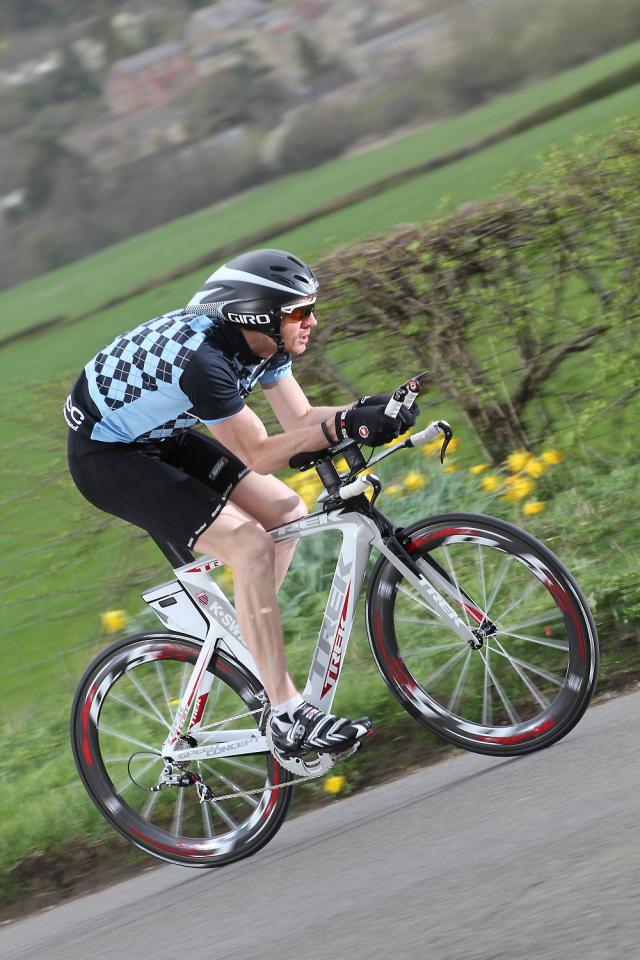
Flatline speed is what the Speed Concept does best. Get it moving, point it where you want to go, and it flies. The 9.9 feels fast but it's when you look at the times you're doing over regular courses that you really start to think that there's something going on here.
Bad science alert! I've got four fairly level, circular routes that I test myself on in training, ranging from 10 miles to 56 miles. I ride them flat out as benchmarks. I set PBs on them all while riding the Speed Concept.
That's completely unscientific, though. It's anecdotal and proves absolutely nothing. It's hardly worth mentioning, to be honest. You need to get wind tunnel data to be sure of a bike's aerodynamic credentials, engineers with tons of experience in the field, and lots of time and money.
Even then, though, it's not as straightforward as you might assume. Far from it. If you think you take a bunch of bikes, stick them in the tunnel one by one, switch on the fan and collect pure, objective data that everyone agrees upon... think again.
Do you put a rider on board each bike? Logically, you might think so, but then the rider has to do exactly the same thing every time. Is that possible, or are you going to stick a mannequin on the bike instead? If you go with the mannequin, who decides on its position? Do you test the same size bike across different manufacturers? Of course. But they're not all available in exactly the same size. Which yaw angles are most significant? Do you fit a water bottle? And so on.
The point is, there's not one protocol upon which everyone agrees. There are enough variables to make even something as seemingly incontrovertible as wind tunnel data anything but simple to obtain. And that's why different manufacturers assure us with complete and utter certainty, beyond any doubt whatsoever, that their bike is the most aerodynamic ever produced.
Check out Trek's Airfoil Development data it's very interesting reading. We won't go into the details here - it would take ages - but it concludes, 'Trek is confident to introduce the Speed Concept as the fastest production bicycle in the world'. You have to bear in mind that this is Trek's own document, of course, that it's a year old, and it doesn't consider either the Specialized Shiv or the Giant Trinity Advanced, for example.
Online triathlon magazine Slowtwitch recently took a bunch of top bikes to a wind tunnel and the Cervlo P4 came out on top overall, although the Trek Speed Concept did best at certain yaw angles with certain setups.
The guys from Trek might well disagree with Slowtwitch's results. And that's the issue. What we can say without much fear of contradiction, though, is that the Trek Speed Concept is right up there when it comes to aero performance. If it's not the absolute best, it's very close to it. If you want anything more concrete than that... too bad. It's just not that black and white.
Something else to consider is that about 80% of the drag you experience when you ride comes from you, the relatively small remainder from the bike. So it's vital that you get a bike that allows you to set your most efficient ride position (that's a whole other can of worms; let's not get started on that one. These pics, by the way, were taken with the bike straight out of the box without any fettling. We're not saying the ride position is in any way ideal).
Plus, you might be able to put up with an uncomfortable ride position on an 10-mile TT but if you're in the saddle for several hours - maybe you're doing an Ironman and have to run a full marathon afterwards - you need enough adjustability to get the setup just right.
The Speed Concept is excellent in this respect. The seat post is available in two different lengths (275mm and 335mm) and we've already mentioned both the reversible seatpost cap and the aero bars. You can choose the stem length and height when you order the bike too.
Okay, that was a big old digression. Back to the way the Speed Concept rides. So we were bowling along fast, slicing through the air and ticking off the miles with ridiculous ease...
No TT bike is going to offer a plush level of comfort and the Trek's large tubes transfer quite a lot of road shock and vibration; that's not unusual. Comfort is more down to the contact points, the gel arm pads on the aerobars providing excellent damping, and the rests themselves are scooped enough to cradle your forearms securely without any fear of mishap if you hit a pothole. I got on really well with them.
Fizik's Arione Tri 2 saddle is a winner too, although you might expect one with rails made of something more high end than manganese on a £7,500 bike. I certainly didn't have any trouble getting in the long rides aboard the Speed Concept, just lifting myself out of the saddle occasionally to relieve tension. That comes with the territory.
The Trek isn't the most manoeuvrable bike ever but let's not go over the top there. The integrated fork limits the steering just a tiny amount. If you ride really slowly and turn the bars really, really tightly you might knock the fork against the frame... but in the real world, it's not much of an issue, even on a dead turn.
It's certainly a bike that emphasizes stability over manoeuvrability, though, and that's exactly what you want when you're down on the aero bars. The wheelbase is pretty long and the bottom bracket is lower than usual for extra stability in a crosswind. If it's blowing a gale, things can get a bit squirrelly up front, but considering the depth of those wheels this is a bike that's simple to control in most conditions.
In terms of acceleration and climbing, the Speed Concept holds its own with other bikes of its ilk. Weighing 8.56kg (18.8lb) for our large sized model, it's not especially light, and those Aeolus 6.5 wheels aren't featherweight either, so I found myself getting out of the saddle quite often after tight turns to get back up to speed, and on steeper inclines in order to maintain the pace. But that's the tradeoff for those aero tubes and deep-section rims. You can't add material without adding weight, and given the choice between an aero TT bike and a lightweight TT bike, unless you happen to be taking part in a mountain time trial, there's only ever going to be one winner. I did find the base bar a little flexy when really hauling on the ends for climbs but not enough to put me off.
We expected the complicated internal cabling to result in spongy braking but it's pretty impressive. There are no barrel adjusters which makes fine-tuning trickier than normal although the actual braking performance on the carbon rims is really powerful. You'd be hard pressed to tell the difference between this and braking on alloy rims. Well, that's an exaggeration, but not by much. That doesn't just make you safer, it allows you to keep the power going for longer and minimises the amount of 'just in case' braking that you do - and that's all time saved.
Postscript
I cheekily used this bike during the Ironman 70.3 UK triathlon before sending it back to Trek (of course I didn't ask. What if they had said no? I was careful and everything). It’s a 56.4-mile/90.2km bike course on Exmoor, with 5,735ft/1,748m of climbing. That’s sandwiched between a 1.2-mile/1.9km swim and a half-marathon.
I got the 12th fastest bike split of the day, out of 1,250 or something. Seven of the 11 quicker times were by professional athletes, which I ain’t. As I was at pains to say up top, anecdotal evidence isn’t really evidence at all but, for what it’s worth, that’s the best bike result I’ve ever had in a big triathlon. Of course, I might have got as good a result on a P4 or a Cannondale Slice or whatever.
What I can tell you for sure is that I could tweak the fit of the Trek enough that it was spot on. It felt great throughout. In terms of comfort, I could have stayed in my aero position much longer. The last thing you want is to have to get out of your tuck all of the time because your back aches or the elbow pads aren’t comfortable enough. There’s little point having an aero setup if you can’t stay in it. Even getting distracted by discomfort can really put you off your stroke.
I’ve never ridden a time trial bike that’s especially agile on the climbs but the Speed Concept is fine on that score. It’s not mega-light compared to a road bike, of course, but I got a firm, wide grip on the base bar and could get it up some steep Exmoor climbs without too much trouble.
The Trek absolutely flies on the flat and on shallow gradients, both up and down, and you get a ton of stability which helps keep things steady even in a slight crosswind. It was actually fairly blowy at times but I never felt out of control or even close to it.
There’s one long, quite steep and technical descent too where you need to get your hands on the base bar for ages for steering and braking. That was fine too. Admittedly, in triathlon ‘technical’ means ‘not straight and flat’. A 30° bend is technical in triathlon terms. But I digress; handling is… well, it’s not a worry.
Those R2C levers are a real plus too. I know it doesn’t sound like a big deal but the fact that they’re waiting in the same place every time no matter what gear you’re in makes a difference. You can keep them between your thumb and forefinger the whole time if you like so there’s very little movement required when you want to shift. Something I forgot to mention before is that you get little markers on the levers too, telling you which gear you’re in, so you don’t have to check the mechs.
Downsides? Hmmm. Let me think. Adjusting the brakes could be easier… a whole lot easier, in fact, particularly the back one which is, to be frank, a bit of a pig to get at. It’s a fag if you just want to wind the blocks a little closer to the rim… but that’s the price you pay for the aerodynamic benefit, I guess. If brakes are tucked away from the wind, they’re tucked away from fingers and Allen keys too.
It’s a similar deal with the gears. You don’t get any external cable stops or in-line barrel adjusters so you can’t adjust them on the fly. If you ever found the chain struggling to go up a sprocket, you’d couldn’t do anything about it from the saddle, so you have to make sure everything is bang on before you set off. Not that I had any worries on that front but, you know, hypothetically.
So, there you go… just a few more real world comments. If I were buying a TT bike right now, the Speed Concept would certainly be on a very short shortlist. Well, it would be if I had 7.5 grand burning a hole in my pocket.
Verdict
Super-fast aerodynamic machine - it could be the most aero bike out there; if not, it's certainly right up there - with excellent adjustability and a top spec sheet
road.cc test report
Make and model: Trek Speed Concept 9.9
Size tested: Large
About the bike
State the frame and fork material and method of construction. List the components used to build up the bike.
Frame OCLV2 Carbon, KVF (Kammtail Virtual Foil) tube design, SC Speed Box & DuoTrap compatible, includes SC Draft Box
Fork Bontrager SC, OCLV2 Carbon, KVF leg design, integrated brake and stem
Wheels Bontrager Aeolus 6.5, carbon
Tyres Bontrager R4 Aero, 700x22c
Shifters SRAM Red R2C, bar end control, 10 speed
Front derailleur SRAM Red
Rear derailleur SRAM Red
Chainset SRAM Red 53/39
Cassette SRAM OG-1090 11-23, 10 speed
Saddle Fizik Airone Tri2, manganese rails
Seat post Bontrager Speed Concept Race X Lite, carbon
Handlebars Bontrager Speed Concept aero bar w/ski bend extension, carbon, direct mount
Stem Bontrager Speed Concept, direct mount
Headset Integrated, sealed bearings, proprietary top, 1in bottom
Brakeset Bontrager Speed Concept integrated brakes w/Bontrager Race XXX Lite aero levers
Tell us what the bike is for, and who it's aimed at. What do the manufacturers say about it? How does that compare to your own feelings about the bike?
In this guise it's aimed at triathletes, really, although TTers will want to look at other Speed Concept options.
Trek say, "Speed Concept is the fastest triathlon bike on the planet. Its revolutionary design pairs a groundbreaking aero shape with the cleanest integration of brakes, cables, and electronics ever seen on a bicycle."
Frame and fork
Overall rating for frame and fork
9/10
Tell us about the build quality and finish of the frame and fork?
Spot on
Tell us about the materials used in the frame and fork?
Both are OCLV2 carbon. OCLV stands for Optimum Compaction, Low Void. It's Trek's proprietary method of producing carbon. This is their top level material
Tell us about the geometry of the frame and fork?
The head angle is 72.5, which is the same as many other TT bike manufacturers use. You can set the seat angle between 75 and 81 depending on how you orientate the seat post cap. A 101cm wheelbase on our large sized test bike provides plenty of stability.
You set the front end height by selecting the right stem and then adjusting the number of spacers between the base bar and the aero extensions.
How was the bike in terms of height and reach? How did it compare to other bikes of the same stated size?
At 54.1cm, the top tube is actually pretty short for a large sized bike
Riding the bike
Was the bike comfortable to ride? Tell us how you felt about the ride quality.
See main body of text. The contact points were very comfortable.
Did the bike feel stiff in the right places? Did any part of the bike feel too stiff or too flexible?
It's a stiff enough frame, yes.
How did the bike transfer power? Did it feel efficient?
Yes
Was there any toe-clip overlap with the front wheel? If so, was it a problem?
None.
How would you describe the steering? Was it lively, neutral or unresponsive? About normal for a TT bike
Tell us some more about the handling. How did the bike feel overall? Did it do particular things well or badly?
There's plenty of stability when you're down on the aero bars
Which components had the most effect (good or bad) on the bike's comfort? would you recommend any changes?
Good, gel-like pads on the aero bars - that makes all the difference.
Rate the bike for efficiency of power transfer:
9/10
Very little frame flex
Rate the bike for acceleration:
7/10
Compared to other TT bikes, it holds its own
Rate the bike for sprinting:
7/10
Not a particular strength - but that's not what this bike is about
Rate the bike for high speed stability:
9/10
Rate the bike for cruising speed stability:
9/10
Rate the bike for low speed stability:
9/10
Rate the bike for flat cornering:
8/10
Rate the bike for cornering on descents:
8/10
Rate the bike for climbing:
8/10
Compared to other TT bikes, fine
The drivetrain
Rate the drivetrain for performance:
9/10
Rate the drivetrain for durability:
8/10
Rate the drivetrain for weight:
9/10
Rate the drivetrain for value:
8/10
Tell us some more about the drivetrain. Anything you particularly did or didn't like? Any components which didn't work well together?
SRAM Red across the board
Wheels and tyres
Rate the wheels and tyres for performance:
8/10
Rate the wheels and tyres for durability:
7/10
Rate the wheels and tyres for weight:
7/10
Rate the wheels and tyres for comfort:
8/10
Rate the wheels and tyres for value:
8/10
Controls
Rate the controls for performance:
10/10
Rate the controls for durability:
8/10
Rate the controls for weight:
9/10
Rate the controls for comfort:
9/10
Rate the controls for value:
7/10
Your summary
Did you enjoy riding the bike? Yes
Would you consider buying the bike? I'm not in the market for a tri/TT bike at this price!
Would you recommend the bike to a friend? Yes
Rate the bike overall for performance:
9/10
Rate the bike overall for value:
7/10
Anything further to say about the bike in conclusion?
It's an incredibly fast bike with enough adjustment for you to get exactly the position you want. It costs a lot of money -no two ways about that -but it's fairly similar to the price of Specialized's Shiv.
Although this bike scores various marks on different features of the ride, the main consideration is speed on flat and rolling roads, and on that front it's fantastic.
Averaging out the value and performance marks would give it an 8 overall - but in this case it feels as if performance outweighs value. Anyway, you can make up your own mind on value.
About the tester
Age: 40 Height: 190cm Weight: 74kg
I usually ride: My best bike is:
I've been riding for: Over 20 years I ride: Most days I would class myself as: Expert
I regularly do the following types of riding: time trialling, commuting, sportives, general fitness riding,
Mat has been in cycling media since 1996, on titles including BikeRadar, Total Bike, Total Mountain Bike, What Mountain Bike and Mountain Biking UK, and he has been editor of 220 Triathlon and Cycling Plus. Mat has been road.cc technical editor for over a decade, testing bikes, fettling the latest kit, and trying out the most up-to-the-minute clothing. He has won his category in Ironman UK 70.3 and finished on the podium in both marathons he has run. Mat is a Cambridge graduate who did a post-grad in magazine journalism, and he is a winner of the Cycling Media Award for Specialist Online Writer. Now over 50, he's riding road and gravel bikes most days for fun and fitness rather than training for competitions.





























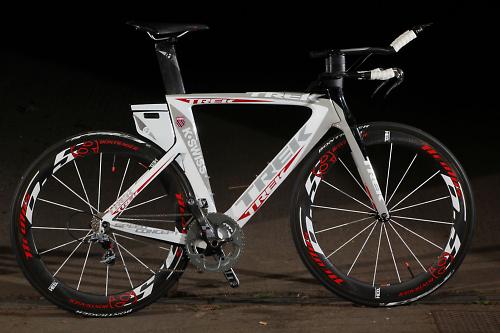

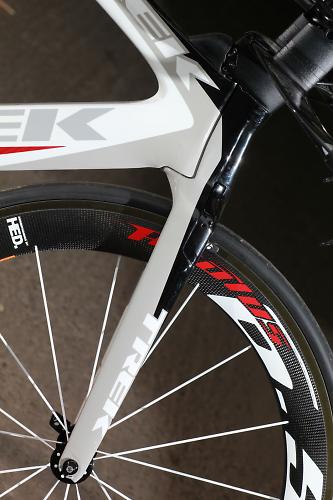
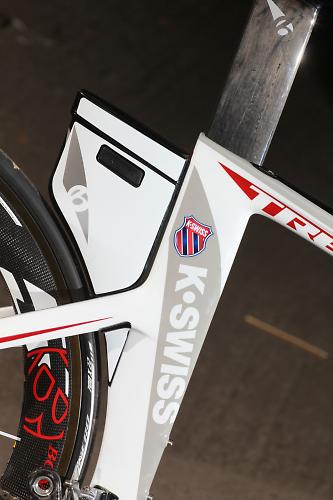

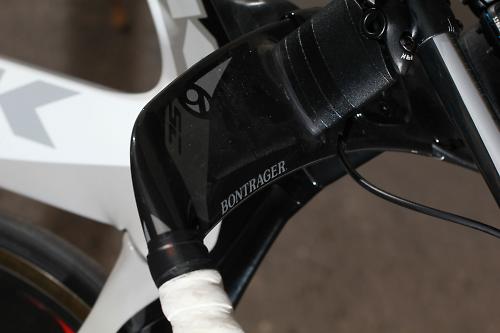

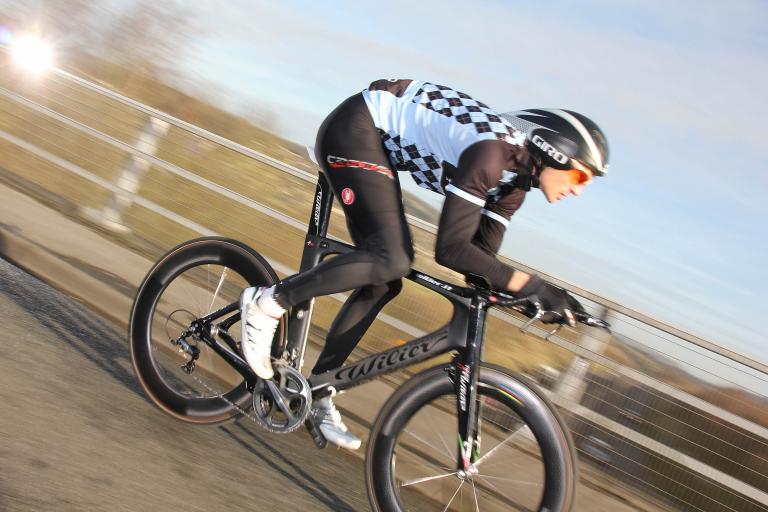
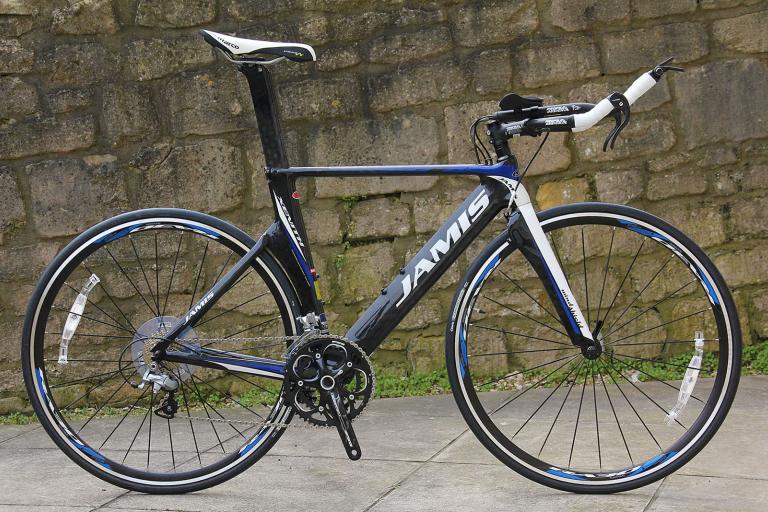
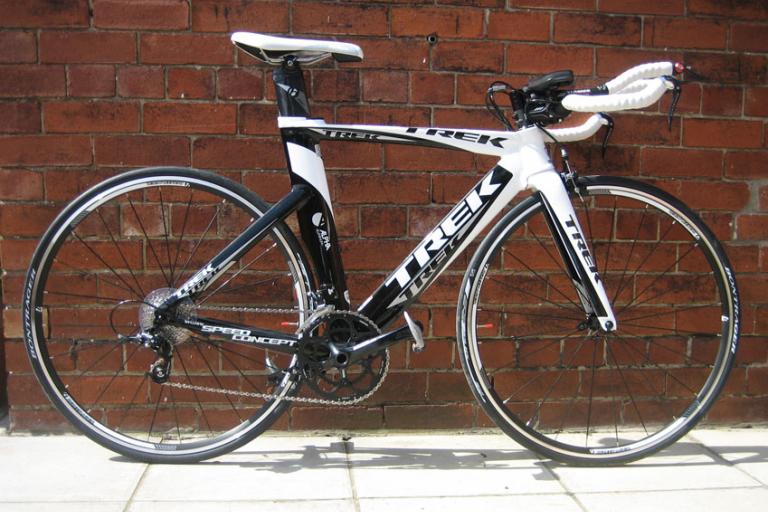
Why don't you offer to give home some tips?
It's a stabiliser, it was first used in WW2 to preserve chocolate in US rations. It allows the milk solids to fully dissolve, US chocolate is less...
LOL , me too the other day, I was on my GSD and got stuck behind a Cadillac Escalade (I think that is what they are called). It was so fat and over...
?
The deterrent effect is almost certainly due to the massively increased likelihood of the offence being detected. As with other crimes, if the...
As a member of the Co-op community (I live in a Housing Co-op) and a bike owner /rider, this is very sad news. We need more Co-ops not less.
It is sad for the individuals concerned but (and this is a general point, rather than specific to this story), we're much better off overall for...
I agree with Pogacar regarding social media. The likes of Facebook, Instagram have done untold damage, especially to the minds of young people....
Lorry carrying 25 tonnes of beer catches fire on the M11...
That looks like a fun bike. Frame only, 2 and an 1/2 grand.